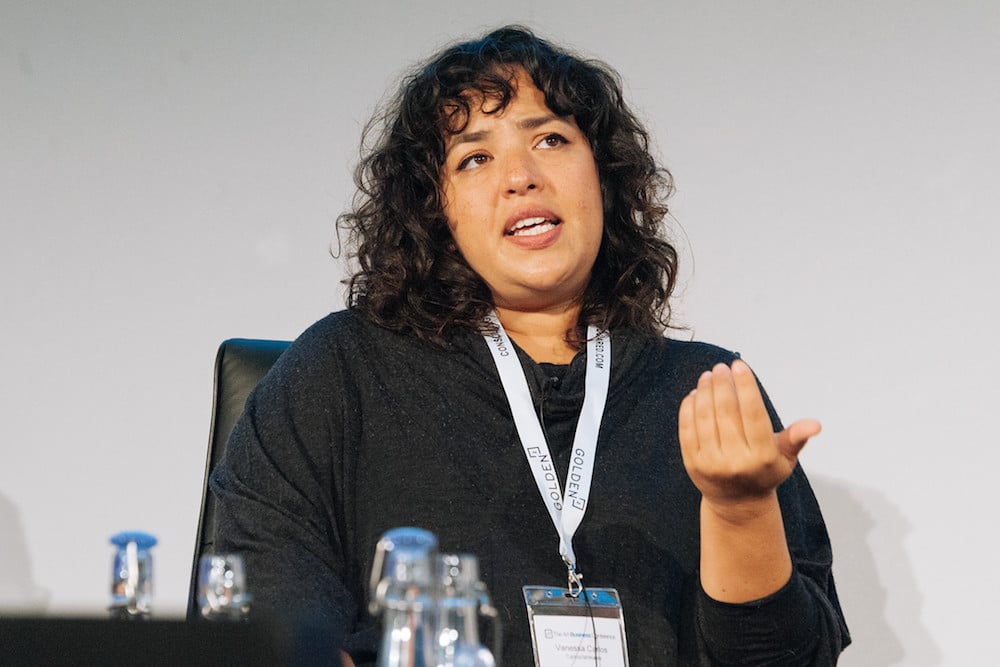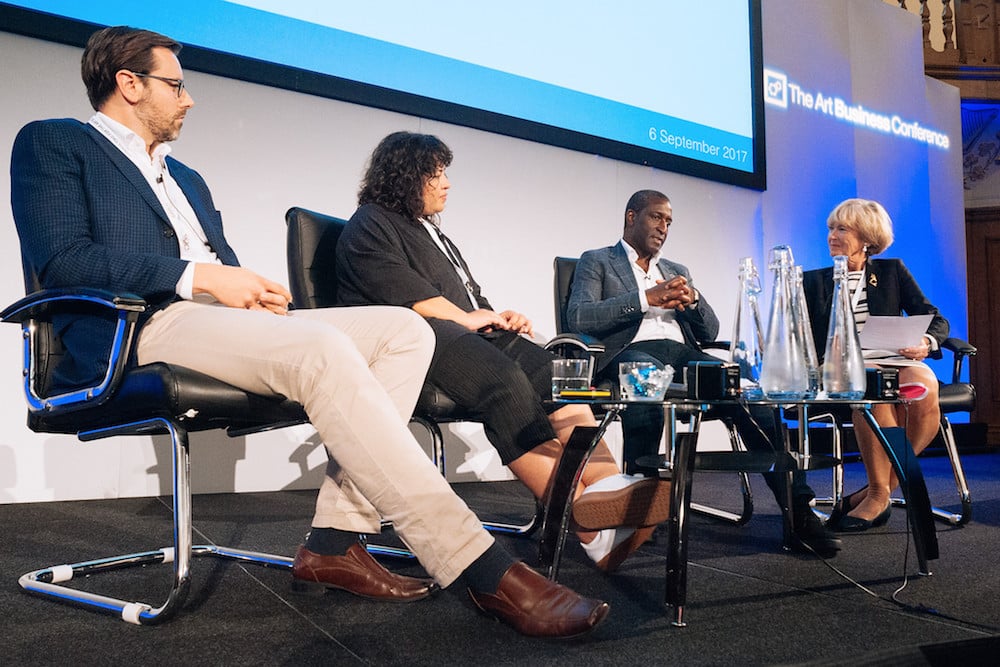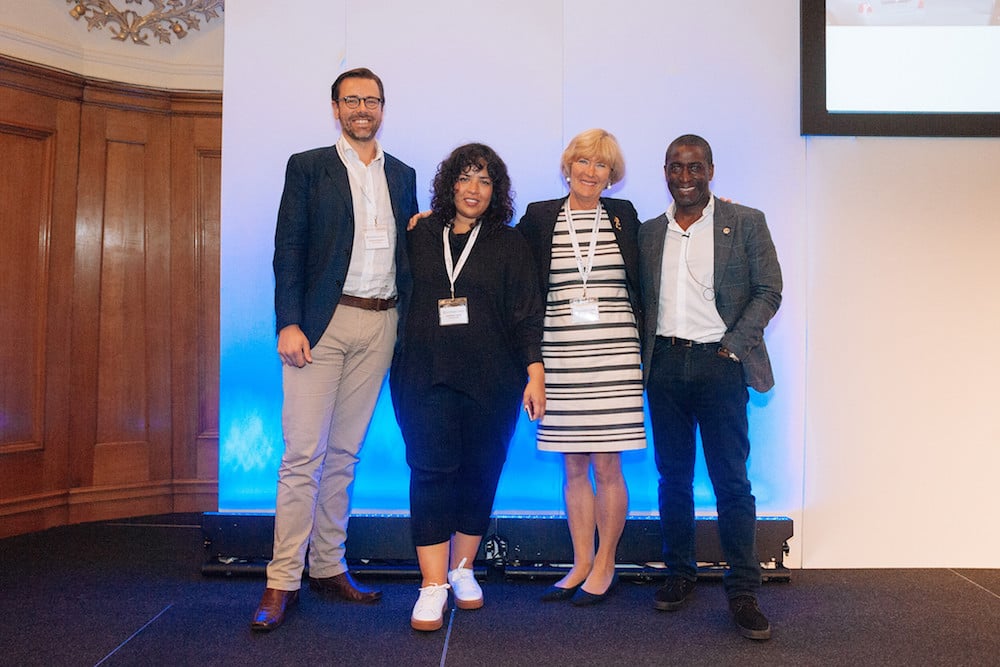
Galleries
More Than Half of London’s Galleries Are Failing and 5 Other Blunt Observations on the Art Market From Condo’s Founder
Vanessa Carlos has some constructive thoughts about how galleries can survive.

Yesterday, as part of this year’s Art Business Conference in London, Georgina Adam hosted a panel called “The Gallery Think Tank: The Evolving Gallery Model.” That title may have been a little homely, but the sense of urgency was clear. And, in a season that has seen a drumbeat of high-profile gallery closures, all eyes were on panelist Vanessa Carlos.
Carlos, of the gallery Carlos/Ishikawa, is also the creator of Condo, an imaginative space-swapping initiative which has been touted as a rare, proactive example of forging new models in a difficult climate. While her fellow panelists—the antiques dealer Lennox Cato, and Preston Benson, managing director of the new gallery complex known as Cromwell Place—offered their own bits of wisdom, we have broken out some of Carlos’s most thought-provoking observations. Here they are:
1) “More Than Half” of Galleries Are Losing Money
The fact that the punishing cost of real estate in art capitals like London or New York is harming the gallery ecosystem comes as no surprise. Yet Carlos has gone beyond that general feeling to take stock of the problem more concretely:
“I pulled out all the public records for results in 2014 of London galleries, and I presented [the data] anonymously. It was really interesting because more than half of the galleries were in red. Which I think is one of the problems now: that of keeping up appearances and not being honest and open to your artists.”
The solution? Honesty. “I think it depends on what you are in it for as a gallerist,” Carlos continued. “If you are in it for sincere discourse, your artists will stay with you for that reason, and you don’t have to become Chanel. That’s a pressure that lots of galleries have, because they are less committed to the art itself than to this branding exercise, and they get themselves into a lot of debt. It was really surprising to see how very few galleries were making any money.”

From left to right, the panelists Preston Benson, Vanessa Carlos, and Lennox Cato, and the moderator Georgina Adam. Courtesy the Art Business Conference.
2) But It’s Not Just About Money
“The challenges of small and mid-sized galleries are well documented: we all know that overheads and the expectations compared to the prices of the works for sale are very unmatched,” Carlos began.
“For me, the problem is the lack of responsibility on every level—from galleries, collectors, and artists—in terms of how we support artists and galleries at every stage of their career. Everyone likes to be very shocked when galleries close, but it is very simple.”
Carlos read an excerpt from the emotional farewell letter recently penned by Basel dealer Jean-Claude Freymond-Guth, in which he described the sense that a system that catered mainly to an isolated elite had become alienating in a way that didn’t merit sacrifice.
“It’s not just about rents and fairs being expensive—we know that,” Carlos said. “It’s about a general attitude about what is art, what do we want out of art, and how do we have a responsibility to ensure that we get that.”
3) The Online Revolution Is Overrated
For years, web sales have been touted as the solution to circumvent the problems posed by the brick-and-mortar model. Yet, when asked by Adam about the importance of online sales, Carlos was supportive—but not overenthusiastic:
“Online sales are important, and in fact a lot of my sales happen online through .jpgs and .pdfs. But a physical space is always going to be important for me because an artist makes a lot of the work in the gallery space, which is also a place for experimentation. And of course, the physical experience of art is one of its greatest joys, so why would you want to remove that?”
“Having said that, online is definitely important,” Carlos added, “although I don’t think that any of the online platforms have cracked the formula yet.”
4) The Condo Model Is Successful, and Spreading
The Condo initiative, which sees galleries in a target city team up to host out-of-town galleries for pop-up exhibitions, has been much-touted as an “elegant solution” to the crisis.
Condo answers, said Carlos, not just to the financial problems with the system, but also to the lack of excitement that comes with having to play it safe: “I started by thinking about how art fairs limit the level of experimentation and risk that artists and galleries can take.”
“I thought that we all have these beautiful spaces that we are renting, so instead of also hiring these temporary booths around the world, I asked a group of London galleries to act as hosts and share their spaces with visiting international galleries. And it’s a nonprofit project, so hosts offer their spaces in kind. […] It’s a much smarter way to show in a city where you might have not that many contacts, as the hosts are also offering their networks, which they have built over many years.”
“So we launched Condo in London 2016 and there was amazing energy. Some dealers told me that it reminded them of why they had opened in a gallery in the first place. And what’s really exciting is that New York approached, so we did it there in the summer, and now we are going to do Mexico City in April. I want to do Asia [a Shanghai iteration is in the works], Europe, North America, South America, and maybe Middle East.”

From left to right, Preston Benson, Vanessa Carlos, Georgina Adam, and Lennox Cato. Courtesy the Art Business Conference.
5) The Age of the “Pointless Art Fair” Is Over
“Condo won’t replace art fairs, but it replaces the pointless art fairs… I hope!” Carlos said. “Collectors want to go either to a big, top-quality fair like Art Basel, or to a small, carefully selected one. What they don’t want is to go to 10 mediocre fairs. And likewise with galleries: galleries don’t need to do more than three or four fairs a year, but some are doing one a month.”
6) But It’s Still About Elite Branding
The only unsolvable problem that Carlos has found in the new model, she said, is scale:
“By definition, Condo has to be quite small. I can’t include everyone who wants to be included. More and more people are asking me to take part, but for me the whole problem with a lot of fairs is that it is too much: I can’t look, and see, and digest all of that. And with Condo I wanted to create something that facilitated looking and meaningful conversations, and that’s why it can’t be enormous.”
That doesn’t mean that the idea, however, can’t go farther. “What I’ve been trying to do is, when other cities where I don’t want to do a Condo contact me, I suggest that they do their own version, and I’m happy to help. I just don’t want it to be under the Condo name.”
Follow artnet News on Facebook.
SHARE
Article topics




No comments:
Post a Comment